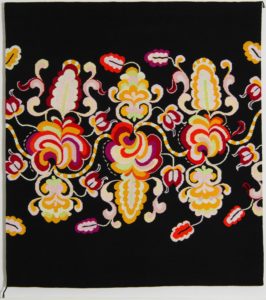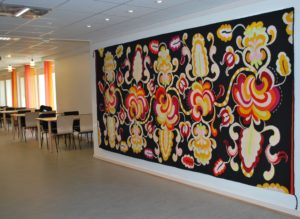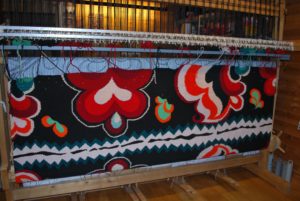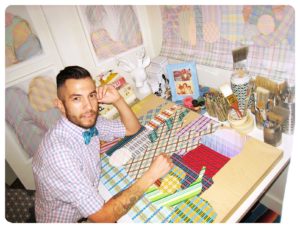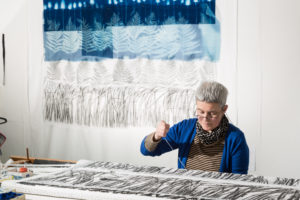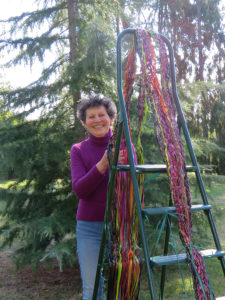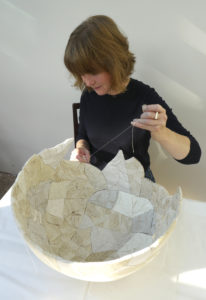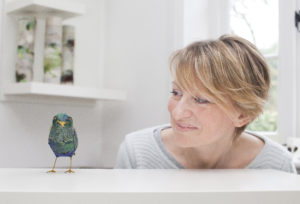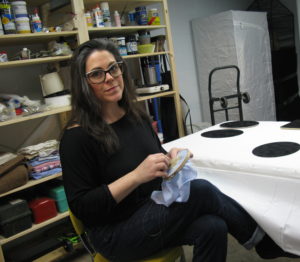October 24, 2016
In
Art, Textile Art
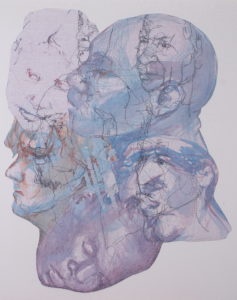
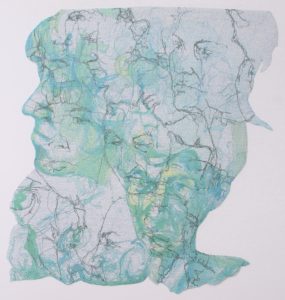
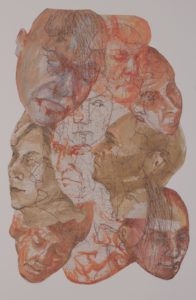
[Clockwise from top: Face to Face 2, 2015; Face to Face 1, 2015 ; Face to Face 3, 2016; All Ink and Machine Embroidery on Paper]
Based in Manchester in the UK, Stewart Kelly describes his work as ‘a fusion of drawing and contemporary stitch’. He’s exhibited in the UK and Europe and we caught up with his to find out more.
When did you first have an interest in textiles?
I recall having an interest in drawing and making from an early age. As a child art and history books appealed to my imagination, frequently making drawings of the characters featured in historical paintings. When I was older I began to visit galleries and view artists work. I knew at that point I wanted to pursue a career in the visual arts. I wanted to be an artist and create artworks to exhibit in galleries, museums and public spaces.
I maintained an interest in the visual arts throughout my schooling. From school I decided to enrol on an art foundation course particularly motivated by my interest in figure drawing. During the course I was able to develop my drawing skills alongside my interest in textiles and surface design.
What was your path to becoming a textile artist?
I enrolled on the BA (Hons) Fashion & Textiles Design course at Liverpool John Moores University with a view to pursuing the textiles pathway on the programme. I selected this course as it allowed a considerable amount of creative freedom. Throughout the course I was able to explore different aspects of art and design including life drawing, computer aided design, weaving, dyeing, screen printing, embroidery and fabric manipulation techniques.
During the course I exhibited woven and embroidered textile samples with Indigo Salon at Premiere Vision in Paris. This opportunity allowed me to exhibit and sell textile samples to designers looking to source fabric ideas to utilise in their forthcoming collections. My clients included Donna Karan, Ralph Lauren, Lauren Vidal, Sahco Hesslein and Ralph Lauren Home Collection.
During the final year of the course I focused mainly on producing a series of woven and embroidered sculptural textiles. This body of work was influenced by my figure drawings and allowed me to focus on specialising in creating fine art textiles.
After graduating I received an AHRC bursary to study an MA in Textiles at Manchester Metropolitan University. The course offered me the opportunity to study the correlation between theory and practice resulting in establishing my fine art practice. My research involved studying contemporary theory in relation to my creative work. In addition, the course allowed me to experiment further with drawing, sculpture and photography in relation to my textile practice. I have continued to exhibit my work in galleries and museums internationally since 2000.
Can you talk us through how you work?
My current practice is inspired by observing and drawing the human form. I use the drawings as a basis to construct layered surfaces which are created using a range of media. In particular, I am interested in exploring the effects of layering drawing and stitching. The accumulation of lines results in abstract images which are open to interpretation from the viewer.
Initially, I make observational drawings in response to the figure. I work intuitively to create expressive drawings which aim to capture the subtleties found in both gesture and movement. I record my responses spontaneously, focusing almost entirely on the subject, unaware of the image evolving on the paper. As the lines accumulate and overlap, the image becomes abstracted. The figures become less recognisable almost camouflaged amongst the multitude of lines. Each mark is unique and documents a moment in time. My observations and responses are distilled into line.
I then transform and develop the drawings by cutting, re-assembling and stitching. Existing drawn lines are emphasised with stitch whilst additional lines derived from separate studies are imposed over the surface. The diversity of drawn and stitched marks create unique textures and quality of lines throughout the work. The drawn line is immediate whilst stitching is slower and more reflective. Occasionally figures are identifiable, whilst in contrast a line may represent a gesture or brief moment in time.
www.stewartkellyartist.com
www.axisweb.org/p/stewartkelly
www.bankley.org.uk/artist-stewart-kelly
www.facebook.com/stewartkellyartist
www.twitter.com/SKellyArtist
www.instagram.com/stewartkellyartist
www.linkedin.com/in/stewartkellyartist
www.pinterest.com/stewartkellyartist



